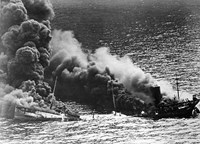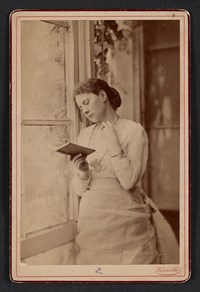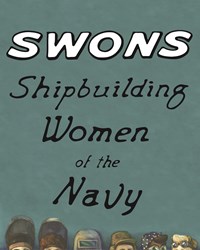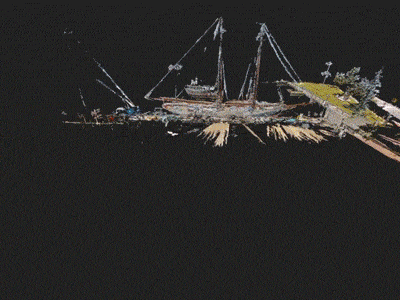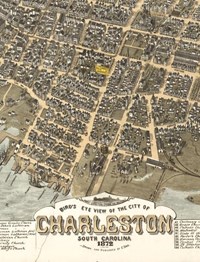- Boston National Historical Park (86)
- Golden Gate National Recreation Area (49)
- Sleeping Bear Dunes National Lakeshore (31)
- Hopewell Culture National Historical Park (24)
- Boston Harbor Islands National Recreation Area (20)
- Fort Sumter and Fort Moultrie National Historical Park (17)
- Isle Royale National Park (17)
- Lewis & Clark National Historic Trail (14)
- Boston African American National Historic Site (13)
- Show More ...
- National Heritage Areas Program (11)
- National Historic Landmarks Program (11)
- National Center for Preservation Technology and Training (5)
- Park History Program (5)
- American Battlefield Protection Program (4)
- Archeology Program (4)
- National Register of Historic Places Program (2)
- National Trails Office - Regions 6, 7, 8 (2)
- San Francisco Bay Area Inventory & Monitoring Network (2)
- Show More ...
Showing 736 results for sailing ships ...
The Battle of the Atlantic
Murmansk Run
USS HARTFORD (1858)
Pioneer Trail Museum
- Type: Place

As pioneers headed west on the Mormon Trail, some settled near the crossing of the West Nishnabotna River. They established Old Macedonia in 1846 to serve the needs of pioneers traveling west. The Pioneer Trail Museum features a replica handcart, oxen yoke, pictures, and other items related to the pioneers and Mormon Trail.
Glen Haven Cannery and Boat Museum
- Type: Place

By the 1900s D.H. Day owned Glen Haven, 5,000 acres around it, 5,000 cherry and apple trees, a farm with hundreds of hogs, and a massive lumber company. Day was a visionary. He could see that the demand for lumber was falling rapidly, and he would need to diversify. So he started a canning company. The Glen Haven Canning Company processed cherries, raspberries, and peaches and shipped the finished canned goods to Great Lake cities.
Commodore Perry's Longboat
A Rollicking Past
- Type: Place

VIEW FROM THE WAYSIDE: This wayside is in a small offshoot off the main boardwalk. The offshoot is surrounded by 3 to 4 foot tall scrubby bushes. Directly overlooking the wayside, the flat, scrubby grassland can be seen in the distance. Behind where you are standing are two benches, both facing the flat grassland. Turning to face the benches, the vast expanse of the rolling hillside can be seen in the distance.
Charles Robinson
- Type: Place

Step aboard Pride II, a reproduction Baltimore Clipper, and sail into the Chesapeake’s maritime past. Explore its history from privateering in the War of 1812 to life on the Bay today. Tour the deck or set sail for a hands-on adventure! As part of the NPS Chesapeake Gateways, Pride II offers a unique way to experience the Bay’s seafaring heritage.
Maria Oakey Dewing
Frances Winifred Williams
The Sinking of the SMS Cormoran and the First US Shots of World War I
- Type: Article

On December 13, 1914, the German auxiliary cruiser SMS Cormoran, out of fuel and cut off from Germany by World War I, took refuge from Japanese warships in Guam. The ship spent the next two years interned in Apra Harbor. When the United States declared war on Germany in 1917, the Cormoran's captain blew up the ship rather than let her fall into enemy hands.
Katie Shepard
- Type: Person
Katie Shepard owned "The Beeches" hotel on North Manitou Island.
William Moultrie
- Type: Person

William Moultrie's 2nd South Carolina Regiment successfully defended Charleston Harbor from the Royal Navy in the Battle of Sullivan's Island on June 28, 1776. This Patriot victory marked the beginning of a meteoric rise for Moultrie as he achieved the rank of general and later served South Carolina as governor.
- Type: Person
Piti
- Type: Place

Above the village of Piti, sit three large Japanese Vickers-type Model 3 140mm coastal defense guns, the remains of hastily constructed fortifications build on the eve of the American invasion of Guam. As the Americans conquered more and more territory in the Pacific, the Japanese forced the CHamoru to build fortifications and install artillery and costal defense guns on Guam under brutal conditions.
- Type: Place

Dwight Eisenhower returned to Abilene on June 22, 1945 to a parade welcoming him home and honoring his leadership in Europe during World War II. After watching the celebration, his grateful acceptance of the recognition began with the above quote. He went on to say that this parade was not just for him; he was only a "symbol" of the soldiers, sailors and airmen who helped bring Allied victory.
- Type: Person
Nisbet Balfour was a capable British Army officer, who fought throughout the American Revolution and was hated by patriots in South Carolina for his conduct as commandant of Charleston.

